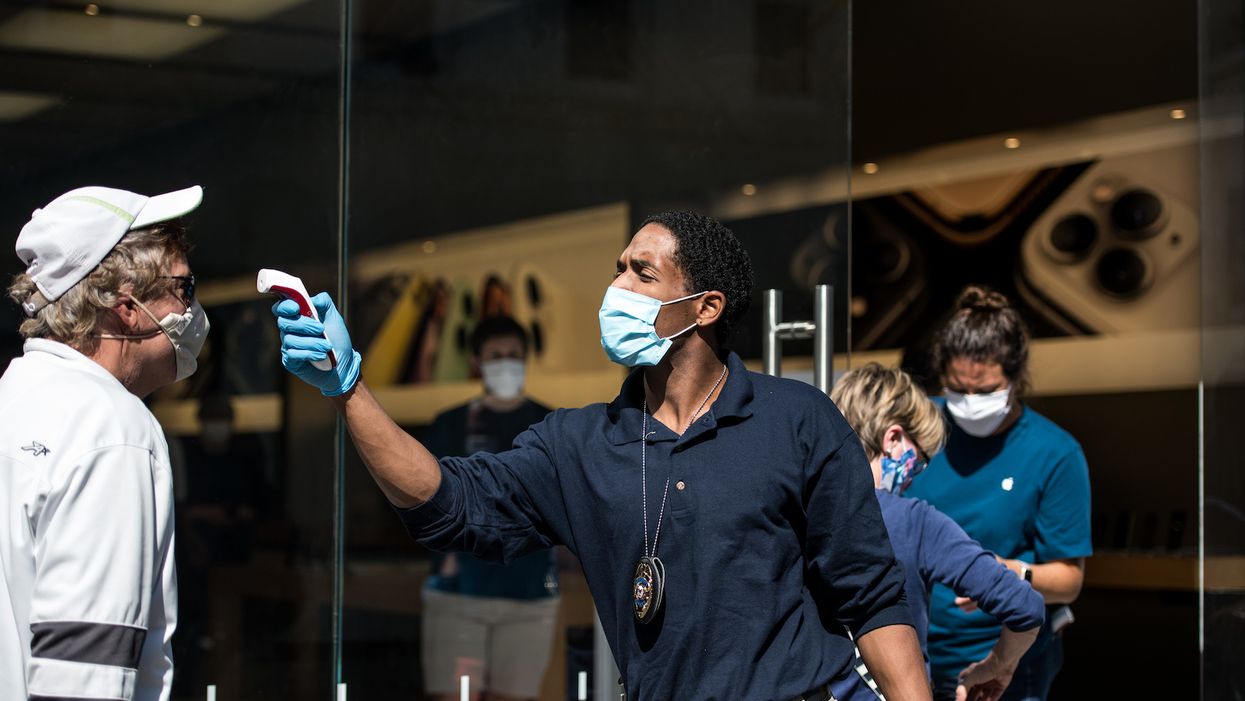
A security guard checks a customer's temperature outside the Apple Store on Wednesday in Charleston, South Carolina. (Photo by Sean Rayford/Getty Images)

Misleading
"Texas is reopening stores and restaurants as coronavirus death rises."
"Florida coronavirus cases rise above 40,500 as businesses continue to reopen."
"Georgia coronavirus deaths reach 1,000 amid reopening effort."
These kinds of headlines are factually accurate, but also misleading. Yet, they are commonly aimed at states that have decided, to varying degrees, to lift lockdown restrictions relatively early.
The intent seems clear: To tie reopening efforts to increases in case numbers and deaths, leading readers to a conclude that the reopening caused the new cases and deaths and that, therefore, lockdowns must persist everywhere indefinitely.
Many of these stories, however, lack important statistical context that might cause readers to draw a different conclusion: That maybe, allowing people to go to barbershops or retail outlets or beaches doesn't have a significant impact on the spread of the coronavirus, when some level of social distancing and precaution are observed.
Axios conducted an analysis of every state, and how the seven-day average number of new cases for May 4-11 compared with the previous week. The results suggest we should probably be seeing more headlines highlighting how much better reopenings have gone than expected.
According to Axios, the average number of new COVID-19 cases in Florida declined by 14%, when comparing the seven-day average of May 4-11 to the previous week. Georgia declined by 12%. Texas remained flat. Oklahoma, another state that reopened earlier than most, has seen a 25% decrease.
California, on the other hand, has shut down its public universities for the entire upcoming fall semester, which doesn't even start until September. Los Angeles County plans to extend its stay-at-home order through July. Despite locking down earlier than anywhere else, California still saw a 23% increase in new cases during May 4-11, compared to the previous week.
Oregon, another notably strict lockdown state, saw a 30% increase. Minnesota, which recently extended its stay-at-home order, is up 33%.
What we've observed so far is that, despite the headlines and the predictions of disaster, reopening society in a careful and gradual way does not seem to create a noticeably worse coronavirus environment than total lockdown.
Sure, outlets can keep writing headlines that say "death rises" and "cases increase," because no matter what decisions are made by states, the cumulative number of confirmed COVID-19 cases in the United States will increase, as will the number of deaths. That's a number that can only ever go up.
That's why it's more useful to highlight statistical trends than it is to throw big, scary numbers into a headline without context. If the goal is to "flatten the curve" and "slow the spread" of COVID-19 so that our health care system can adequately handle the volume, the numbers currently indicate that those goals are attainable without a full lockdown.